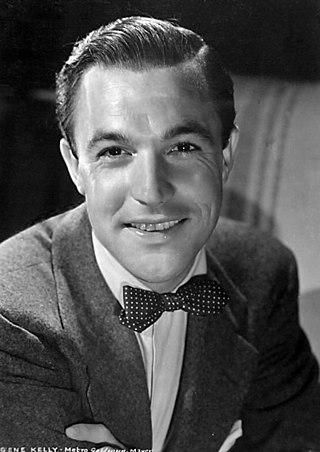
Eugene Curran Kelly was an American dancer, actor, singer, director and choreographer. He was known for his energetic and athletic dancing style and sought to create a new form of American dance accessible to the general public, which he called "dance for the common man". He starred in, choreographed, and co-directed with Stanley Donen some of the most well-regarded musical films of the 1940s and 1950s.

Anchors Aweigh is a 1945 American musical comedy film directed by George Sidney, starring Frank Sinatra, Kathryn Grayson, and Gene Kelly, with songs by Jule Styne and Sammy Cahn. The film also features José Iturbi, Pamela Britton, Dean Stockwell, and Sharon McManus.

Adolph Green was an American lyricist and playwright who, with long-time collaborator Betty Comden, penned the screenplays and songs for musicals on Broadway and in Hollywood. Although they were not a romantic couple, they shared a unique comic genius and sophisticated wit that enabled them to forge a six-decade-long partnership. They received numerous accolades including four Tony Awards and nominations for two Academy Awards and a Grammy Award. Green was inducted into the Songwriters Hall of Fame in 1980 and American Theatre Hall of Fame in 1981. Comden and Green received the Kennedy Center Honor in 1991.

Kathryn Grayson was an American actress and coloratura soprano.
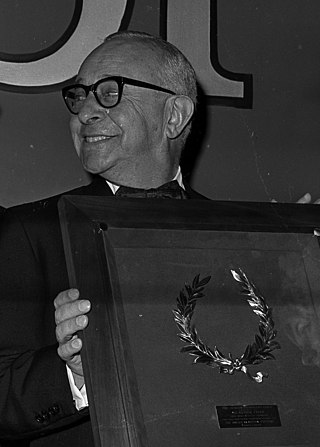
Arthur Freed was an American lyricist and a Hollywood film producer. He won the Academy Award for Best Picture twice, in 1951 for An American in Paris and in 1958 for Gigi. Both films were musicals, and both were directed by Vincente Minnelli. In addition, he produced the film Singin' in the Rain, the soundtrack for which primarily consisted of songs he co-wrote earlier in his career.
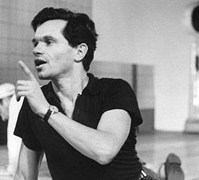
Michael Kidd was an American film and stage choreographer, dancer and actor, whose career spanned five decades, and who staged some of the leading Broadway and film musicals of the 1940s and 1950s. Kidd, strongly influenced by Charlie Chaplin and Léonide Massine, was an innovator in what came to be known as the "integrated musical", in which dance movements are integral to the plot.

Cyd Charisse was an American dancer and actress.

Easter Parade is a 1948 American Technicolor musical film directed by Charles Walters, written by Sidney Sheldon, Frances Goodrich, and Albert Hackett from a story by Goodrich and Hackett, and starring Judy Garland, Fred Astaire, Peter Lawford, and Ann Miller. The film contains some of Astaire's and Garland's best-known songs, including "Easter Parade", "Steppin' Out with My Baby", and "We're a Couple of Swells", all by Irving Berlin.

That's Entertainment! is a 1974 American compilation film released by Metro-Goldwyn-Mayer to celebrate the studio's 50th anniversary. The success of the retrospective prompted a 1976 sequel, the related 1985 film That's Dancing!, and a third installment in 1994.
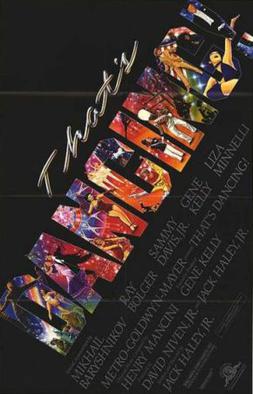
That's Dancing! is a 1985 American compilation film produced by Metro-Goldwyn-Mayer that looked back at the history of dancing in film. Unlike the That's Entertainment! series, this film not only focuses specifically on MGM films, but also included films from other studios.

George Sidney was an American film director and producer who worked primarily at Metro-Goldwyn-Mayer. His work includes cult classics Bye Bye Birdie (1963) and Viva Las Vegas (1964). With an extensive background in acting, stage direction, film editing, and music, Sidney created many of post-war Hollywood's big budget musicals, such as Annie Get Your Gun (1950), Show Boat (1951), Kiss Me Kate (1953), Jupiter's Darling (1955), and Pal Joey (1957). He was also a president of the Screen Directors Guild for 16 years.
"That's Entertainment!" is a popular song with music written by Arthur Schwartz and lyrics by Howard Dietz. The song was published in 1952 and was written especially for the 1953 Metro-Goldwyn-Mayer musical film The Band Wagon. The song is performed in the film by Jack Buchanan supported by Fred Astaire, Nanette Fabray, and Oscar Levant.
Roger Edens was a Hollywood composer, arranger and associate producer, and is considered one of the major creative figures in Arthur Freed's musical film production unit at Metro-Goldwyn-Mayer during the "golden era of Hollywood".

Ziegfeld Follies is a 1945 American musical comedy film released by Metro-Goldwyn-Mayer, primarily directed by Vincente Minnelli, with segments directed by Lemuel Ayers, Roy Del Ruth, Robert Lewis, and George Sidney, the film's original director before Minnelli took over. Other directors that are claimed to have made uncredited contributions to the film are Merrill Pye, Norman Taurog, and Charles Walters. It stars many MGM leading talents, including Fred Astaire, Lucille Ball, Lucille Bremer, Fanny Brice, Judy Garland, Kathryn Grayson, Lena Horne, Gene Kelly, James Melton, Victor Moore, William Powell, Red Skelton, and Esther Williams.
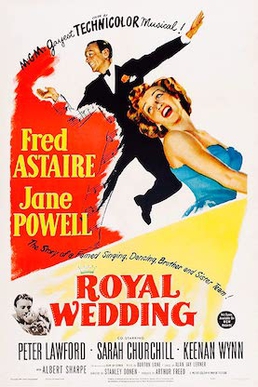
Royal Wedding is a 1951 American musical comedy film directed by Stanley Donen, and starring Fred Astaire and Jane Powell, with music by Burton Lane and lyrics by Alan Jay Lerner. Set in 1947 London at the time of the wedding of Princess Elizabeth and Philip Mountbatten, the film follows an American brother-sister song and dance duo who, while performing, each fall in love — he, with a female dancer, and she, with an impoverished but well-connected nobleman. The film marked Donen's second directorial feature. It was released as Wedding Bells in the United Kingdom.
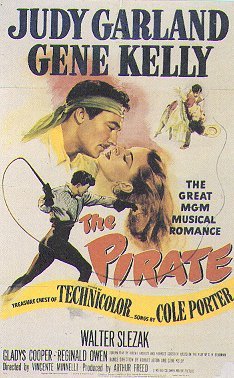
The Pirate is a 1948 American musical film produced by Metro-Goldwyn-Mayer. With songs by Cole Porter, it stars Judy Garland and Gene Kelly with costars Walter Slezak, Gladys Cooper, Reginald Owen, The Nicholas Brothers, and George Zucco.

Charles Powell Walters was an American Hollywood director and choreographer most noted for his work in MGM musicals and comedies from the 1940s to the 1960s.

This is a comprehensive guide to over one hundred and fifty of Fred Astaire's solo and partnered dances compiled from his thirty-one Hollywood musical comedy films produced between 1933 and 1968, his four television specials and his television appearances on The Hollywood Palace and Bob Hope Presents the Chrysler Theatre which cover the period from 1958 to 1968. Further information on the dance routines may be obtained, where available, by clicking on the film links.
John Wesley Dawn was an American make-up artist whose career spanned 37 years and over 200 films.

Judy Garland signed her first recording contract at age 13 with Decca Records in late 1935. Garland began recording albums for Capitol Records in the 1950s. Her greatest success, Judy at Carnegie Hall (1961), was listed for 73 weeks on the Billboard 200 chart, was certified Gold, and took home five Grammy Awards.

















